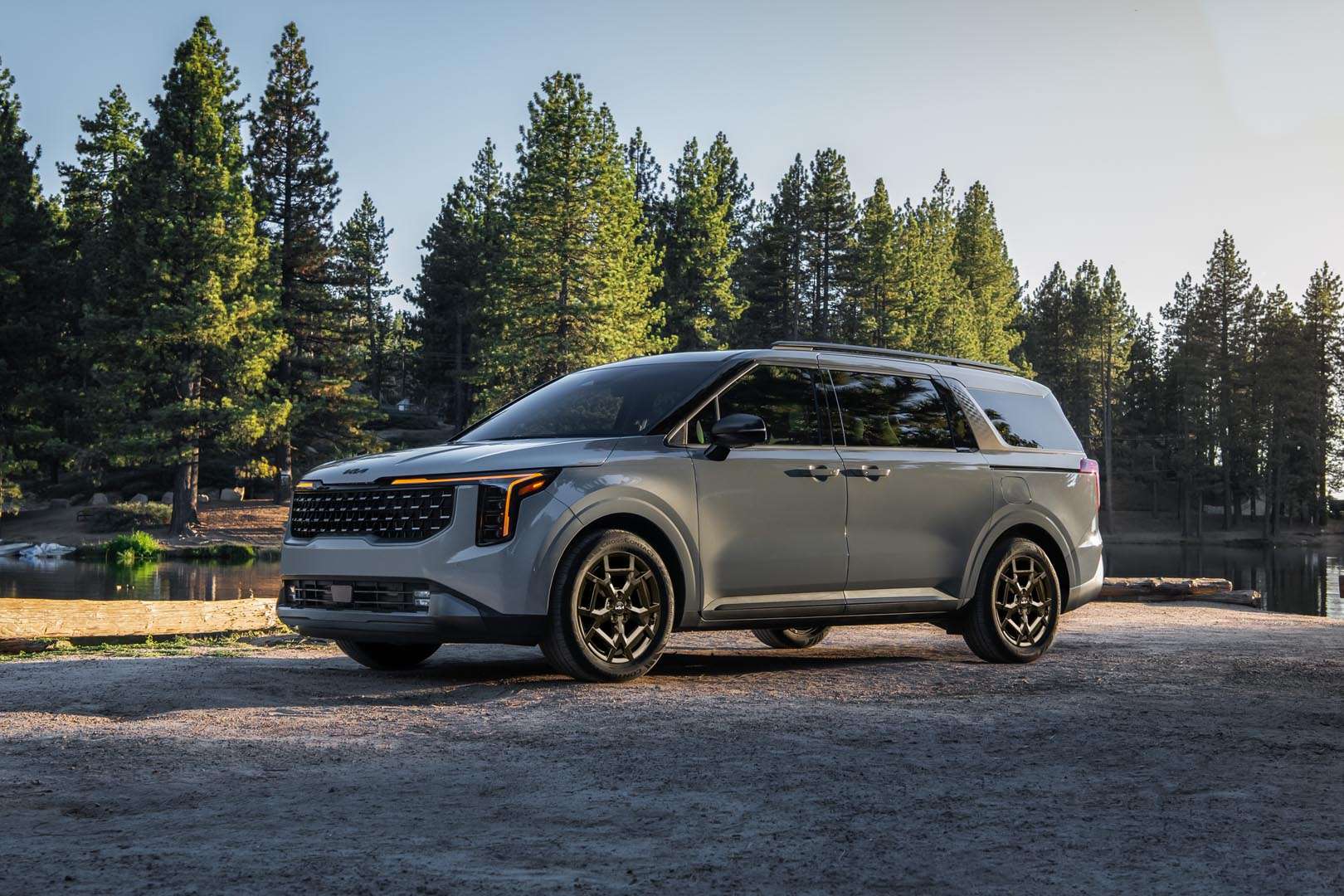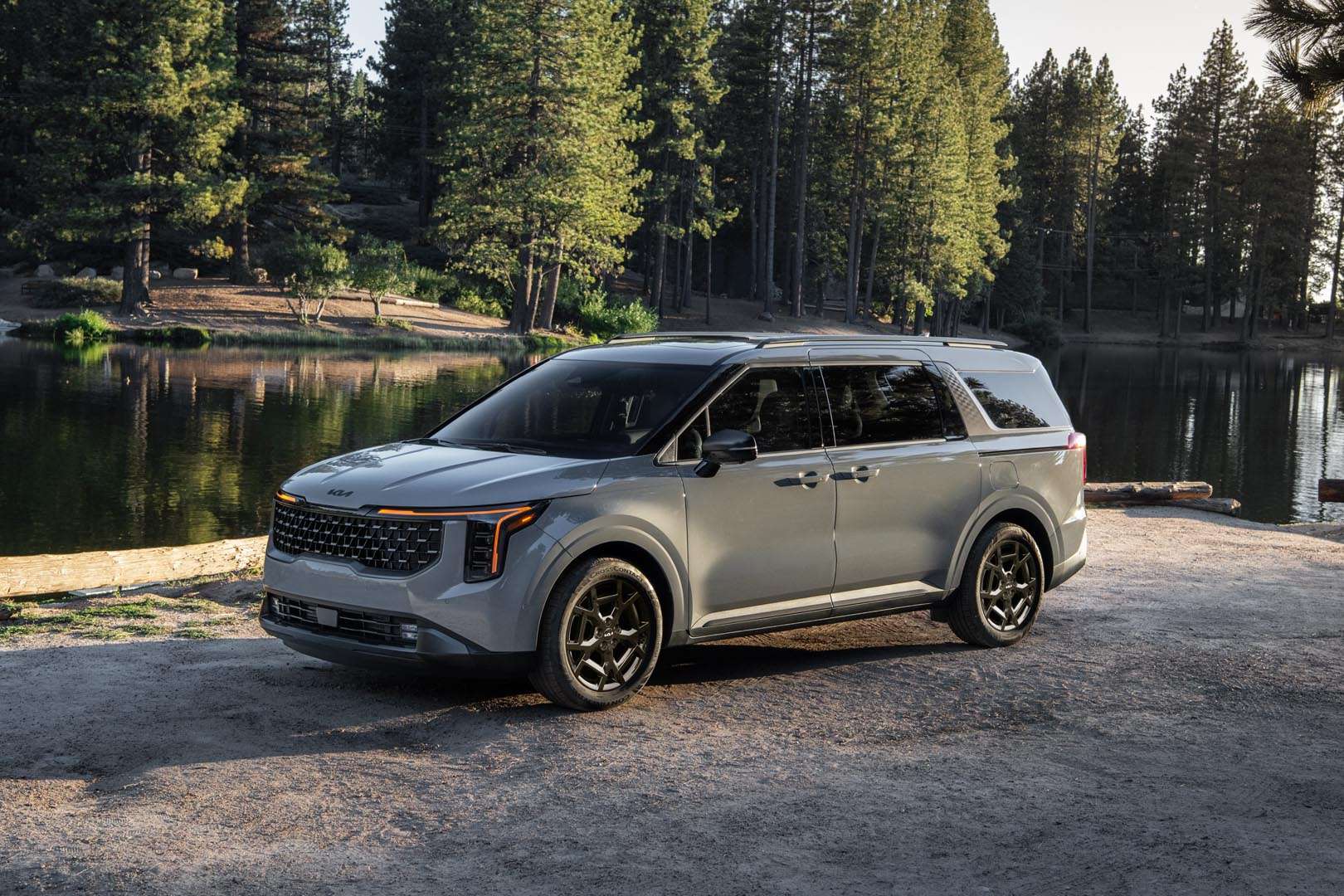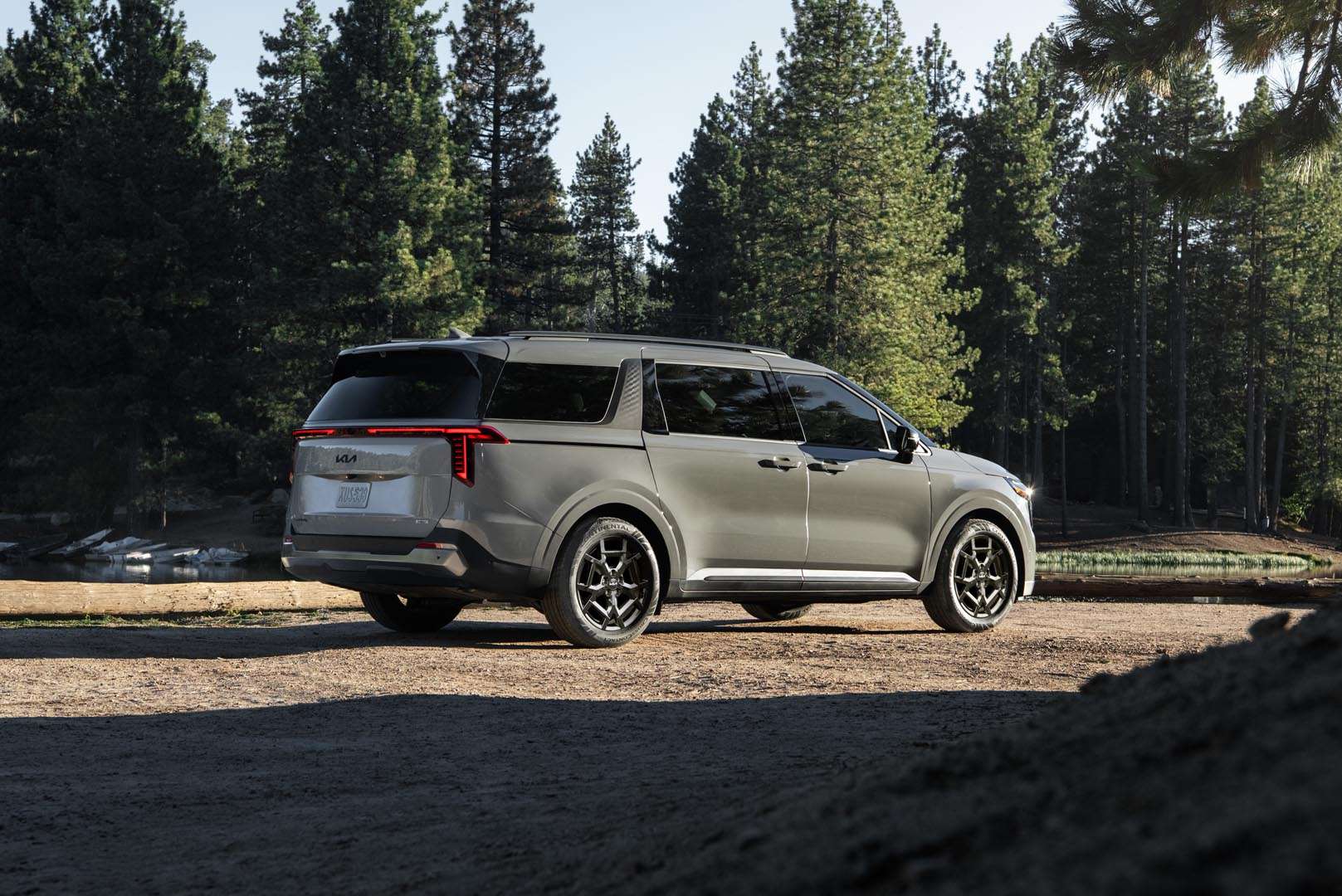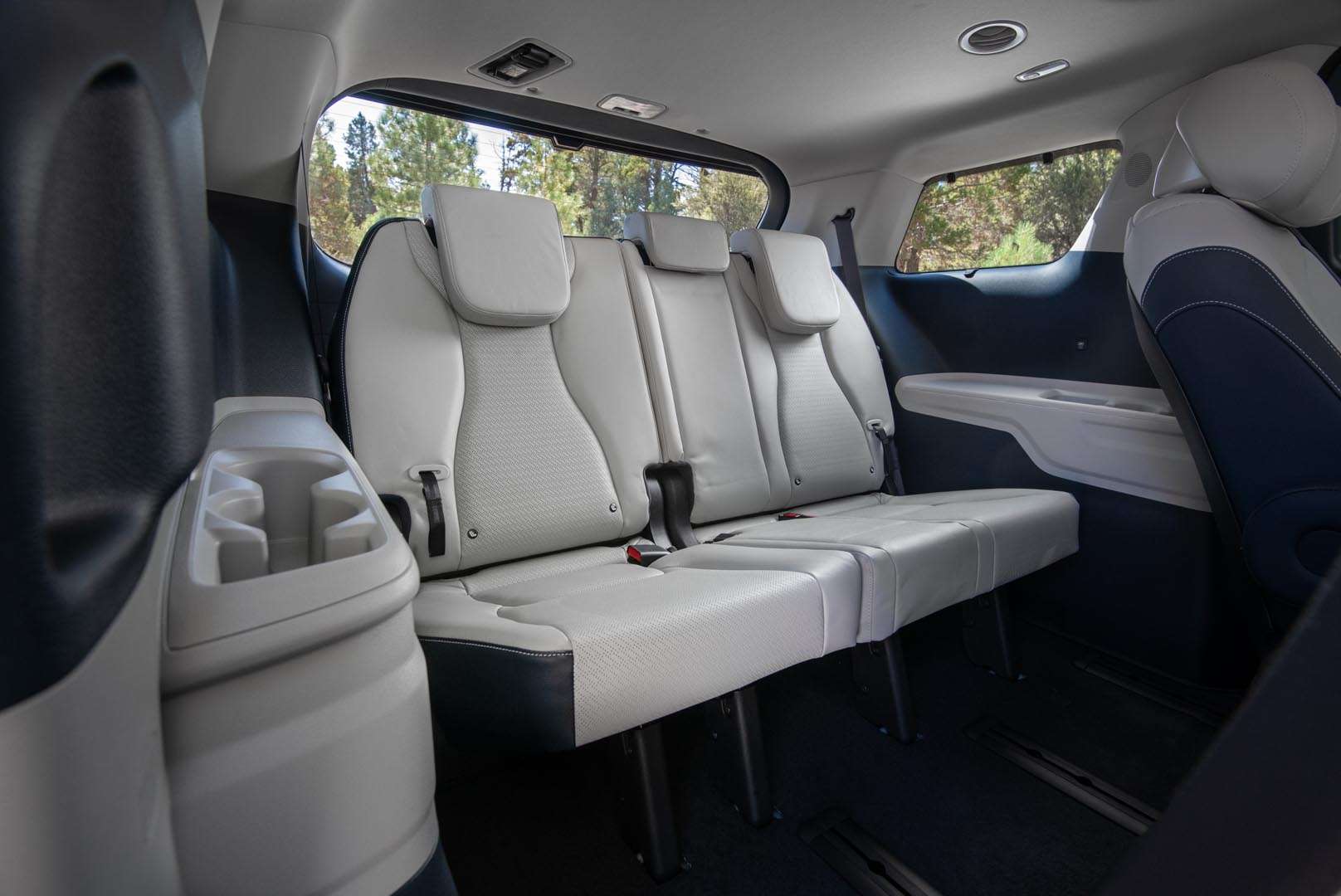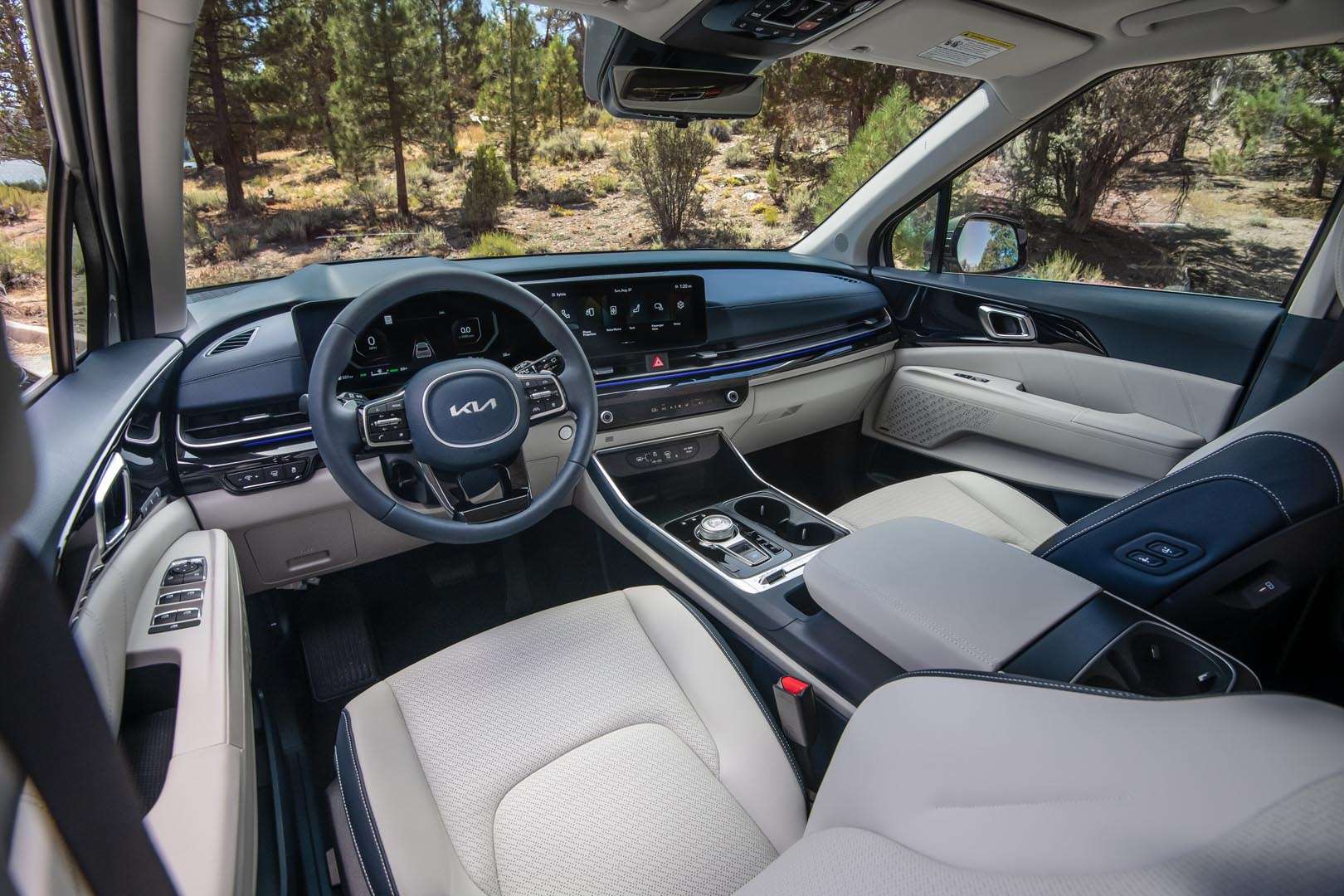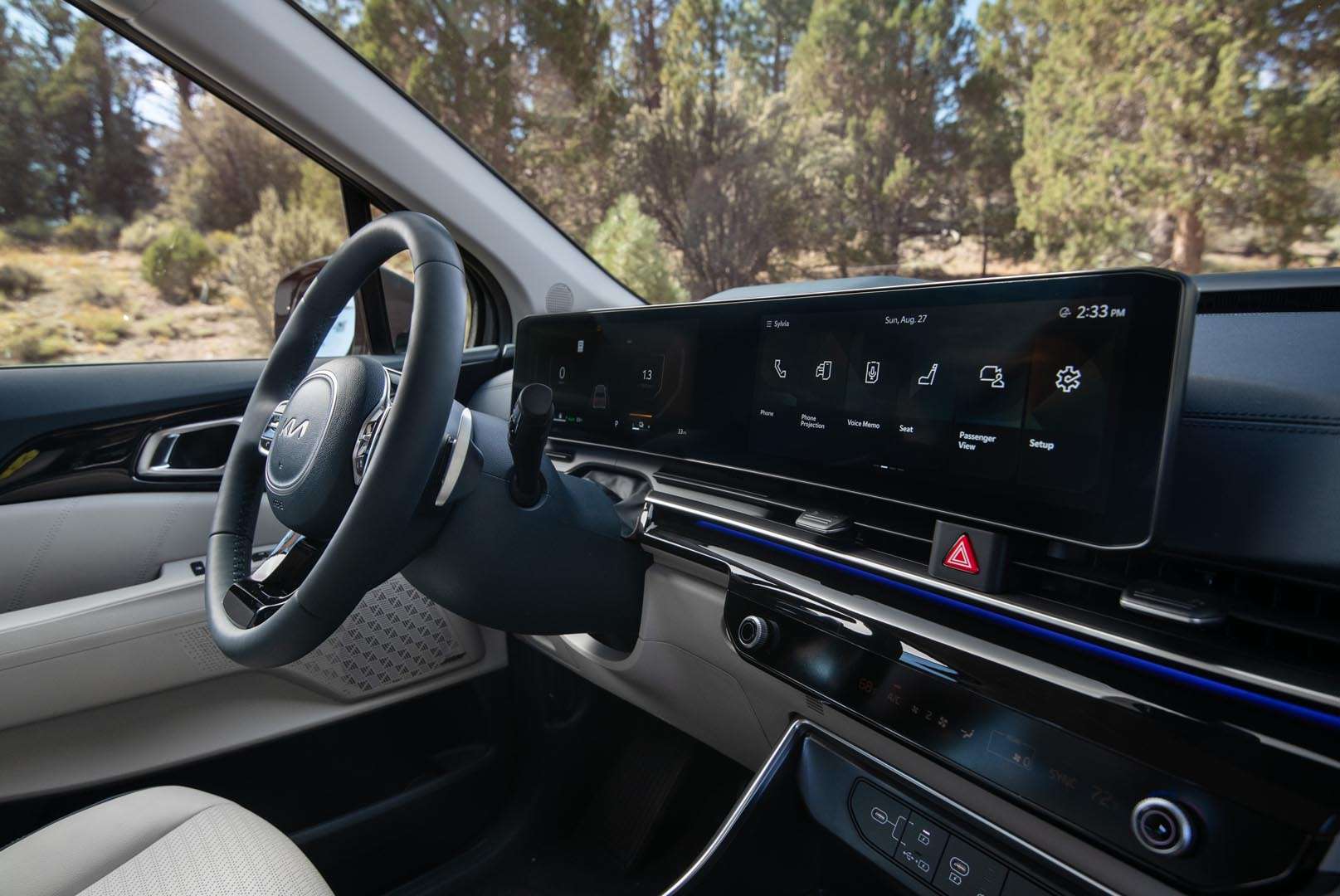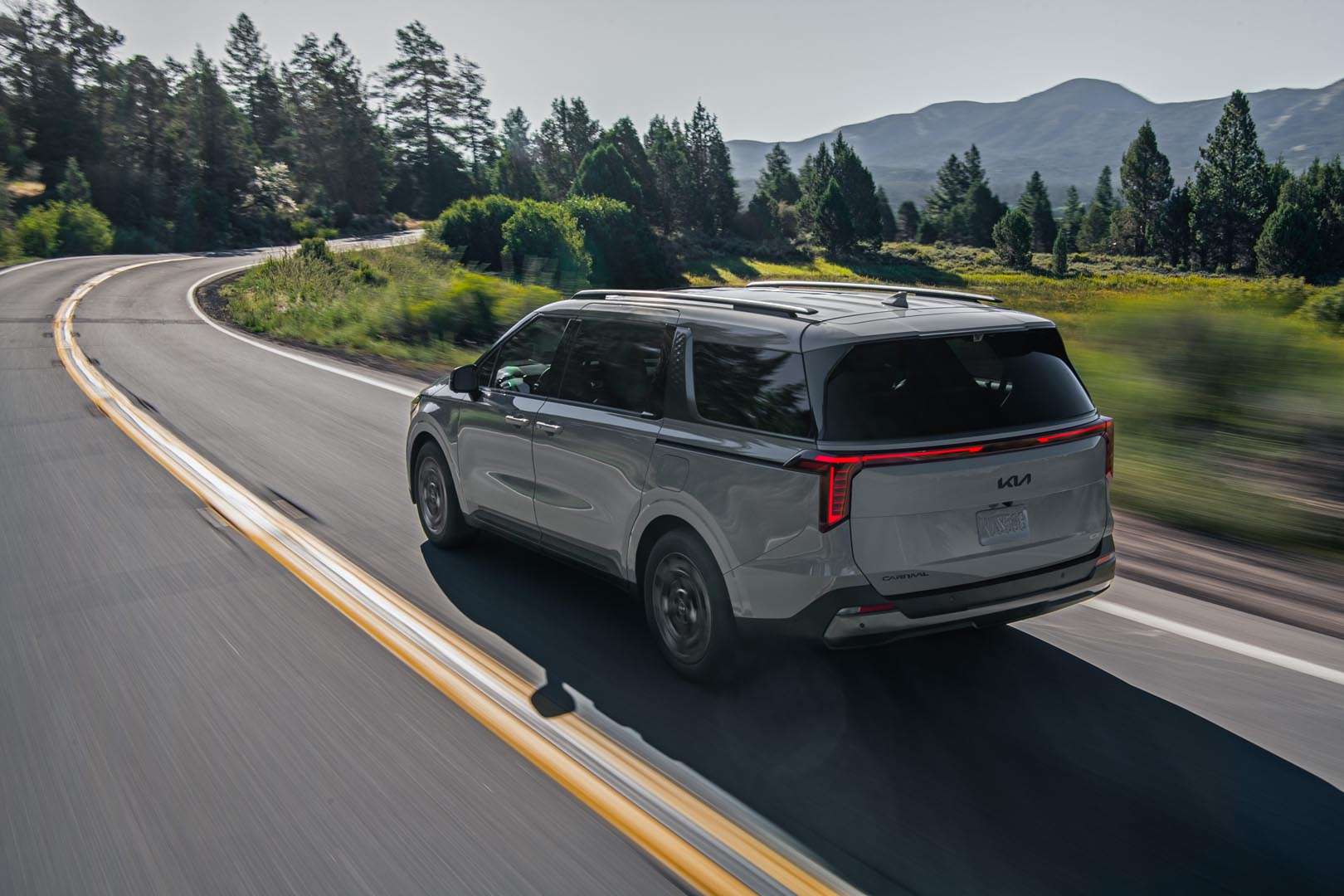
KIA Carnival hybride 2025
A third minivan opens up to electrification
Pros and cons
Pros
- Smooth and stable ride
- Smooth and quiet hybrid engine
- Comfortable front seats
- Careful finish
- Competitive price
Cons
- Power just adequate (hybrid)
- Significant body roll in corners
- Limited rear headroom with panoramic roof
- Cumbersome, difficult-to-adjust, and non-removable second-row seats (SX+)
- Unimpressive fuel economy (hybrid)
Overview
Have you noticed the considerable number of Kia Carnivals on the road in Quebec? This is certainly due to the product's design quality, but also to the fact that it's currently the most affordable minivan. The Grand Caravan dramatically lost this title when it became a stripped-down version of the Pacifica, swapping its Dodge name for Chrysler in the process.
In the minivan segment, however, "more affordable" doesn't rhyme with "bargain." The base LX trim now costs around $44,000, largely due to a $1,000 price increase over the 2025 version. The latter had already relegated the sub-$40,000 price tag carried by the Carnival LX for a few years after its unveiling.
It's worth noting that the 2025 model year has improved standard equipment with a partial redesign that also added Kia's new inverted L-shaped lighting elements to the Carnival. The Korean brand's signature dual-function touch control bar also appears on a redesigned dashboard.
More importantly, a hybrid option has been added to four of the six trim levels in the range. An additional $2,550 allows you to swap the V6-eight-speed transmission for the combination of a turbocharged four-cylinder, a small traction battery, and an electric motor integrated into a six-speed transmission. On paper, this powertrain, similar to that of the Kia Sorento and Sportage hybrids, offers more torque than the six-cylinder, but 46 less horsepower.
The Toyota Sienna, the only other conventional hybrid in the category, offers almost identical power. Like the Pacifica plug-in hybrid, which completes the trio of electrified minivans, the Japanese model, however, costs several thousand dollars more than the Carnival.
We had the opportunity to test drive the latter for over 1200 km in February 2025, when it served as a support vehicle for the CAA EV Winter Drive. Here are five highlights about this model, which Kia assembles in its native South Korea.
Verdict
The Carnival made a good impression in 2021 during a trip of over 3,000km to the Magdalen Islands. Its comfort, the flexibility of its V6, and its relatively low fuel consumption—9.5L/100 km—made it the ideal vehicle for such a family odyssey.
The new hybrid version retains the cozy feel of the six-cylinder model while enhancing stability, thanks to the weight of the high-voltage battery under the floor. It doesn't sacrifice one bit of interior space compared to the gas-only models. Good news for the SX and SX+ trims, whose sunroof reduces rear headroom. As a bonus, these top-of-the-line variants cost at least $10,000 less than an equivalent Toyota Sienna, not including taxes and financing costs.
This dual-engine Kia is a little less convincing in relation to the very purpose of a hybrid vehicle: fuel economy. Our test resulted in a fuel consumption of 10.1L/100km, higher than that of the V6-powered Carnival (9.5L/100km). Admittedly, we drove the latter in the middle of summer, while we tested the hybrid in the depths of winter. The result is still the opposite of the 35% advantage announced by Natural Resources Canada.
If you're primarily looking for fuel efficiency when buying a hybrid, the Sienna will be more convincing than the Carnival. However, the Kia wins in terms of finish, refinement, and initial cost. The choice is yours!
Evaluation
A refined, but overtaxed hybrid engine
Much like Toyota has been doing for ages, Kia and Hyundai now use the same hybrid engine in all their family vehicles. However, the South Korean manufacturers have opted for a small turbocharged engine, while their Japanese rival uses a "big" naturally aspirated four-cylinder. Despite all the solidity of the Toyota powertrain, it must yield to Hyundai-Kia's in terms of quietness and refinement. Everything is smooth in the Carnival Hybrid, from revving up to shifting.
On the other hand, the smallish 1.6-liter engine has to work hard when passing or entering the highway, or even to maintain speed on hidden hills. It's not uncommon for the transmission to remain in fifth gear for long stretches, which makes the engine drone. Fortunately, Kia has done a good job of soundproofing its minivan, except for the whistling of crosswinds.
Heavier, more stable
The Carnival Hybrid weighs about 150 kg more than the V6 model. This extra weight is due to the 1.49 kWh battery that powers the small electric motor. The higher additional mass is located (for example, in the passenger compartment or on the body), the more it impairs handling. Conversely, weight can improve agility when placed closer to the ground, since it lowers the vehicle's center of gravity.
This is exactly what happens with the Carnival. The hybrid version seemed slightly more stable than the V6 model on the highway, less vulnerable to crosswinds, and less likely to lean when cornering. The steering remains light and disconnected from the road, but requires few corrections at cruising speeds.
No need to worry about the lack of all-wheel drive. With good winter tires and a very progressive throttle, we had no trouble guiding the Carnival Hybrid on slippery highways and snowy streets typical of early February. Tha van also proved very predictable on a 20km stretch of winding, icy roads sprinkled with a light dusting of sand.
Some space and versatility challenges
You buy a minivan primarily for the exceptional roominess and versatility of this body style. The Carnival SX+ Hybrid that Kia loaned us delivers in this regard, but not as well as some rivals. The fault lies primarily with the panoramic roof, shared with the SX version, and which subtracts 6 precious centimeters from headroom. As a result, several of the adults we drove during the CAA EV Winter Drive were touching the ceiling in both rows of rear seats.
Third-row occupants also had to contort themselves to get there due to the bulky middle seats exclusive to the SX+ trim level. Their complex mix of power and manual adjustments, combined with a retractable footrest, prevents them from being folded down to access the rear. This forces passengers to squeeze between them to reach it. Furthermore, it is impossible to remove the middle seats to maximize the cargo area. Opting for an LX+ or EX model fortunately eliminates these obstacles while allocating substantial savings.
Tech is impressive, but sometimes impractical
The revised Carnival offers the manufacturer's latest infotainment system, along with redesigned instrument graphics. While more contemporary in design, the dials are hidden by the steering wheel because Kia confines them to a long, thin—and too low—rectangle that joins them with the central display. The latter's 12.3-inch screen is poorly utilized, with large blank areas flanking cluttered sections that unnecessarily truncate the information displayed.
You can adapt to this, but it's much harder to get used to the unpleasant dual-function touch-sensitive button bar that Kia insists on implementing across its range. A narrow button toggles between the infotainment and ventilation controls, and then determines the purpose of the two dials located on either side of the bar. Located too close to the left dial, this crucial button is too easy to accidentally brush. More often than not, you end up lowering the temperature to the minimum setting instead of turning down the audio volume. We can't wait for a comeback to physical buttons and separate controls, like in the most recent Hyundai models.
Fill up on active safety
Until 2024, you had to upgrade to a Carnival EX to get blind-spot monitoring and rear cross-traffic alert. Not only have these features proven effective in helping avoid certain collisions, but they are also among the most popular among drivers. Kia wisely corrected this for 2025, making them standard on the LX (available only with the V6 engine) and LX+ models.
Adaptive cruise control was added to these trims at the same time, along with front and rear parking sensors. Overall, the Carnival is now among the best-equipped minivans in terms of driver assistance features. Our only complaint is that Kia has, for several years now, stopped offering conventional cruise control in its models equipped with an adaptive version. This is a useful option when road debris cover up the adaptive system's sensor.
Safety features
- Antilock brakes with electronic brake force distribution and emergency brake assist
- Stability and traction control
- Hill-start assist
- Front airbags
- Driver knee airbag
- Front side airbags
- Side curtain airbags
- Front seat belts with pretensioners
- Seven or eight adjustable headrests
- Rear occupant alert
- Backup camera
- Tire pressure monitor
- Forward collision warning
- Forward automatic emergency braking with pedestrian and cyclist detection
- Lane departure alert with automatic steering assist
- Active lane control
- Auto high beam
- Blind spot monitoring with automatic steering assist
- Rear cross-traffic alert with automatic braking
- Adaptive cruise control
- Rear safe exit warning
- Front and rear parking sensors
- Side parking assist sensors, surround camera system and rear automatic emergency braking (standard, SX and SX+ versions, not available, LX+ and EX)
Crash test results
National Highway Traffic Safety Administration
Overall score: Not tested
Frontal impact: 4/5
Side impact: Not tested
Rollover resistance: 4/5
Insurance Institute For Highway Safety
Moderate overlap frontal impact: 2/4
Small overlap frontal impact: 4/4
Side impact: 3/4
Rear impact: Not tested
Roof strength: Not tested
